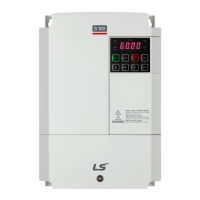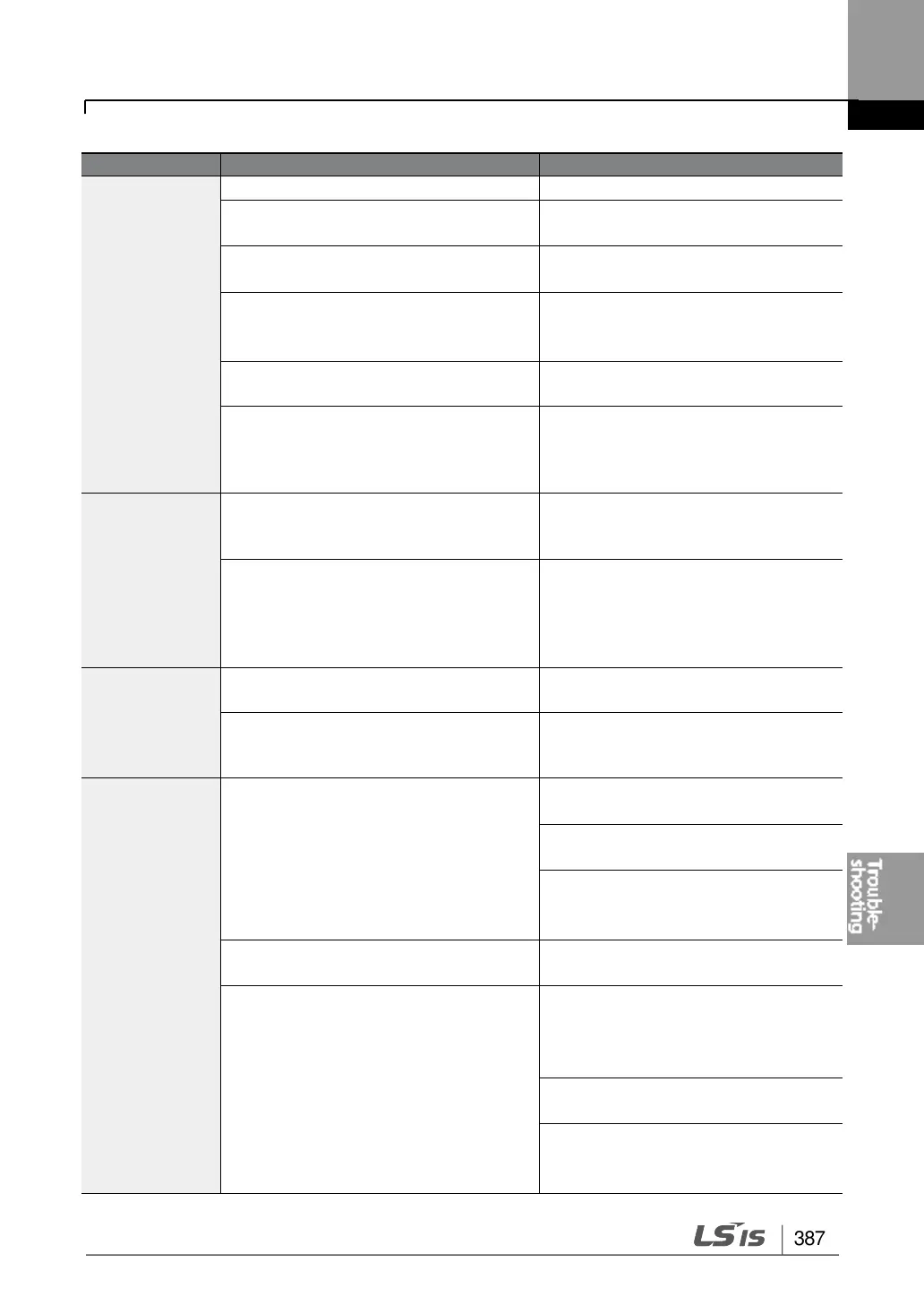The input voltage or current for the
frequency command is incorrect.
Check the input voltage or current for
the frequency command.
The PNP/NPN mode is selected
incorrectly.
Check the PNP/NPN mode setting.
The frequency command value is too
low.
Check the frequency command and
input a value above the minimum
frequency.
The [STOP/RESET] key is pressed.
Check that the stoppage is normal, if
so resume operation normally.
Change the operation modes (V/F,
IM, and Sensorless). If the fault
remains, replace the inverter with a
model with increased capacity.
The motor
rotates in the
opposite
direction to the
command.
The wiring for the motor output cable is
incorrect.
Determine if the cable on the output
side is wired correctly to the phase
(U/V/W) of the motor.
The signal connection between the
control circuit terminal (forward/reverse
rotation) of the inverter and the
forward/reverse rotation signal on the
control panel side is incorrect.
Check the forward/reverse rotation
wiring.
The motor only
rotates in one
direction.
Reverse rotation prevention is
selected.
Remove the reverse rotation
prevention.
The reverse rotation signal is not
provided, even when a 3-wire
sequence is selected.
Check the input signal associated
with the 3-wire operation and adjust
as necessary.
The motor is
overheating.
Increase the Acc/Dec time.
Check the motor parameters and set
the correct values.
Replace the motor and the inverter
with models with appropriate capacity
for the load.
The ambient temperature of the motor
is too high.
Lower the ambient temperature of
the motor.
The phase-to-phase voltage of the
motor is insufficient.
Use a motor that can withstand
phase-to-phase voltages surges
greater than the maximum surge
voltage.
Only use motors suitable for
apllications with inverters.
Connect the AC reactor to the
inverter output (set the carrier
frequency to 2 kHz).

